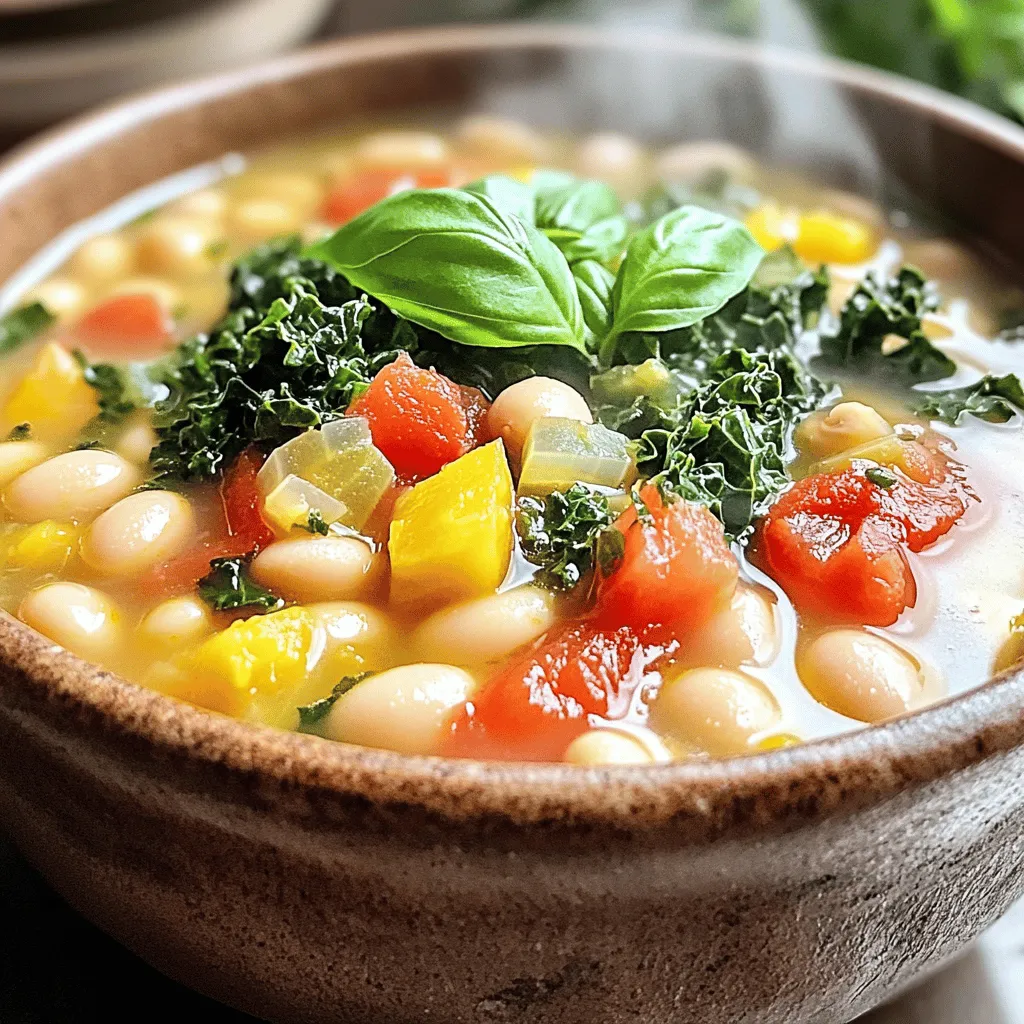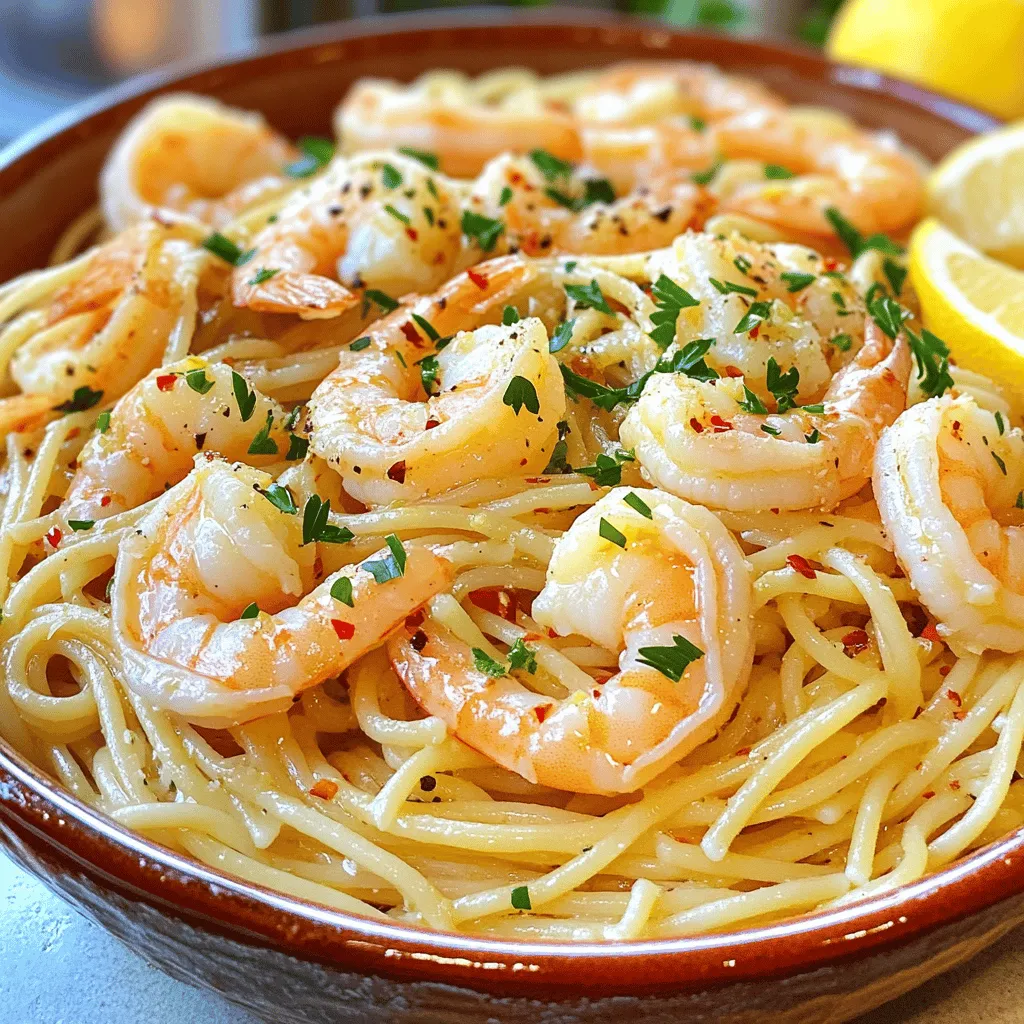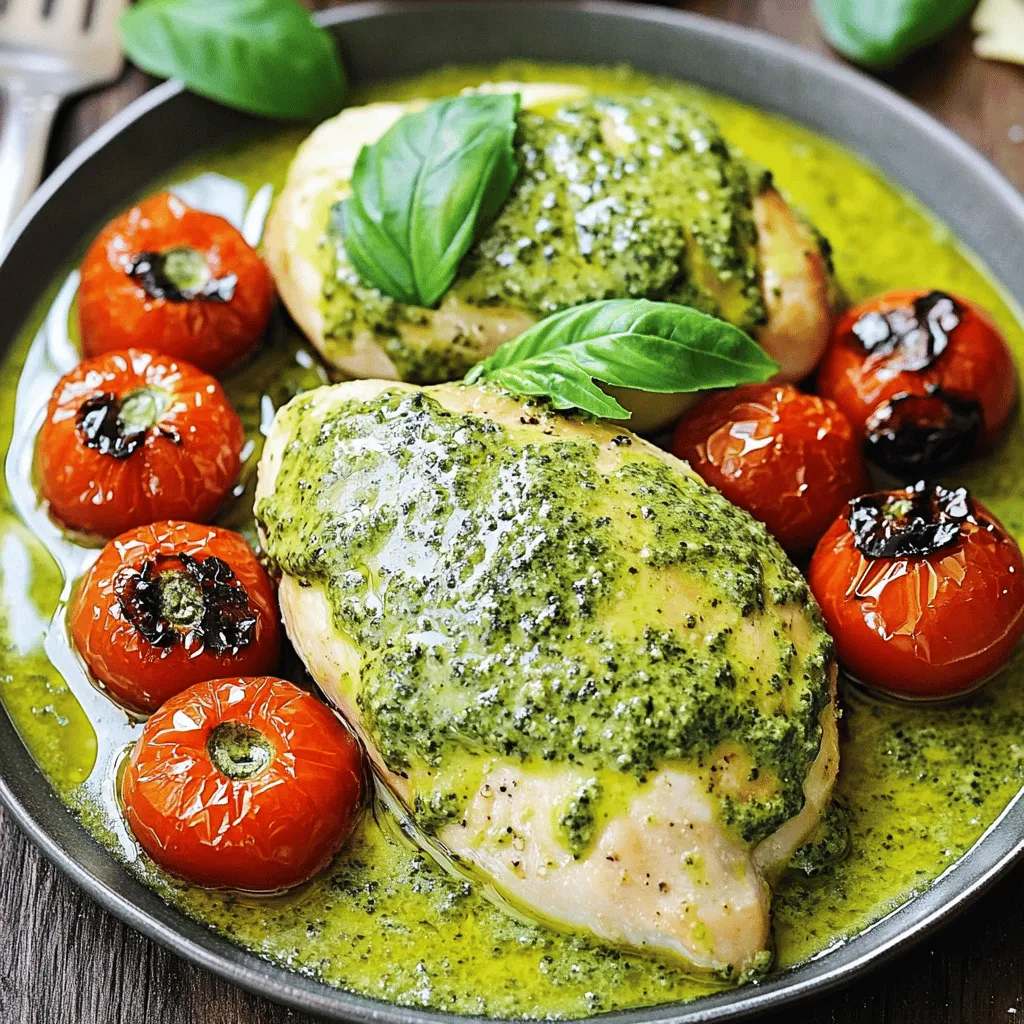Dinner

Tuscan White Bean Soup Delicious and Nutritious Meal
If you’re craving a warm and hearty meal, Tuscan White Bean Soup is a must-try. This soup is packed with flavor and goodness, making it

Savory Shrimp Scampi Simple and Tasty Recipe
If you love seafood, you’ll enjoy this simple Shrimp Scampi recipe. This dish packs bold flavors in every bite. You’ll learn how to pick the

Creamy Pesto Chicken with Roasted Tomatoes Delight
Are you ready to elevate your dinner game? My Creamy Pesto Chicken with Roasted Tomatoes is simple yet amazing. This dish brings together tender chicken,
![- 4 chicken breast fillets - 1 cup shredded coconut - 1 cup buttermilk (or yogurt) The main ingredients make this dish shine. Chicken breast fillets form the base. They soak up the marinade well. Shredded coconut adds crunch and flavor. The buttermilk or yogurt helps tenderize the chicken. - 1 cup all-purpose flour - 1/2 teaspoon garlic powder - 1/2 teaspoon onion powder - Salt and pepper to taste For the dry ingredients, all-purpose flour creates a crispy coating. Garlic powder and onion powder add depth to the taste. A pinch of salt and pepper enhances all the flavors. - 1 cup apricot preserves - 1 tablespoon fresh ginger, grated - 1 tablespoon lime juice - 1 tablespoon soy sauce (or coconut aminos for a gluten-free option) For the apricot sauce, apricot preserves bring sweetness. Fresh ginger adds a zesty kick. Lime juice balances the flavor profile. Soy sauce rounds it out with umami. This sauce elevates the coconut chicken to new heights. You can find the Full Recipe to guide you through the steps. Enjoy the blend of flavors! To start, gather your buttermilk, garlic powder, onion powder, salt, and pepper. In a bowl, mix these ingredients well. Add the chicken breast fillets to the bowl. Make sure each piece is coated fully. Cover the bowl and place it in the fridge. For the best flavor, marinate the chicken for at least 30 minutes. If you have time, let it sit for up to 2 hours. This enhances the taste and keeps the chicken juicy. Next, we need to prepare the coating. Grab a shallow dish and combine the all-purpose flour and shredded coconut. Stir them together until they blend well. Season this mixture with a pinch of salt and pepper to add flavor. This coating will give your chicken a crunchy texture and a lovely coconut taste. Now it's time to cook the chicken. Remove each fillet from the marinade. Allow the extra buttermilk to drip off. Dredge the chicken in the coconut-flour mixture. Press gently so it sticks well. Heat vegetable oil in a large skillet over medium heat. Once the oil is hot, add the coated chicken fillets. Cook for 4-5 minutes on each side. You want them golden brown and cooked through. The internal temperature should reach 165°F (75°C). After cooking, place the chicken on a paper towel-lined plate. This helps soak up any extra oil. For the complete recipe, check the Full Recipe section. To get that crispy texture, make sure to coat the chicken well. Use a mix of shredded coconut and flour. This gives the chicken its crunch. You can also try adding spices like paprika or cumin to the coating. This adds extra flavor and warmth. For marinating, you can use yogurt instead of buttermilk. Yogurt gives a tangy taste. You can also add a splash of lime juice to the marinade for a fresh kick. Marinate for at least 30 minutes. The longer you marinate, the deeper the flavor. To get the best sauce, use quality apricot preserves. Heat them gently with the grated ginger, lime juice, and soy sauce. Stir often to avoid sticking. If the sauce is too thick, add a bit of water. This will help reach the right consistency. For garnishes, fresh cilantro adds a bright touch. Lime wedges also add a nice pop of color. You can sprinkle some sesame seeds for a crunchy finish. When frying, a deep skillet works best. It holds more oil and heat. Keep the oil at medium heat. This prevents the chicken from burning while cooking through. To avoid oil splatter, use a splatter guard. It keeps the mess down. You can also place the chicken in the pan gently to minimize splashes. For the full recipe, check out the details above. Enjoy your cooking! {{image_2}} You can easily make this dish gluten-free. Instead of all-purpose flour, use gluten-free flour. It works well for coating the chicken. For a lighter sauce, swap regular soy sauce with coconut aminos. This change cuts some calories while keeping great flavor. Want to kick up the taste? Add spices like paprika or cayenne to the coating. Fresh herbs like cilantro or basil can add a nice touch. You can also make a unique apricot sauce. Try mixing in orange juice or a dash of chili for a zesty twist. Pair your coconut chicken with rice or a fresh salad. These sides balance the rich flavors. For a fun presentation, slice the chicken and fan it out on the plate. Drizzle the apricot sauce on top and sprinkle with fresh herbs for a pop of color. For the full details on making this dish, check out the [Full Recipe]. To keep your coconut chicken fresh, use airtight containers. Glass containers work well, but plastic ones are fine too. Store leftovers in the fridge. They stay good for about 3 to 4 days. If you want to keep them longer, consider freezing. When reheating, use an oven or skillet. This helps maintain the crispy texture. Avoid the microwave, as it can make the chicken soggy. If frozen, let the chicken thaw overnight in the fridge. Reheat in a 350°F oven until warmed through, about 15 minutes. You can prep parts of this dish in advance. Marinate the chicken and store it in the fridge. Mix the flour and coconut ahead of time too. Always ensure food is cooled before storing. When meal prepping, keep everything clean to avoid contamination. You can marinate the chicken for at least 30 minutes. This time allows the flavors to sink in. For a deeper flavor, try marinating for up to 2 hours. This extra time helps the chicken stay juicy and tasty. Yes, you can! Cook the chicken and make the apricot sauce ahead. Store them in separate containers in the fridge. When you’re ready to eat, reheat the chicken in a pan. Warm the apricot sauce on the stove. This method keeps everything fresh and delicious. This dish pairs well with several sides. Try fluffy rice or a crisp salad for a light touch. You can also serve it with steamed veggies for a healthy option. For drinks, a fruity iced tea or a light white wine works great. Check the [Full Recipe] for more details on the main dish! This blog post covered a delightful recipe for Coconut Chicken with Apricot Sauce. We explored key ingredients like chicken, coconut, and a flavorful apricot sauce. I shared step-by-step instructions, tips for perfecting texture, and creative variations. You now have the tools to make this dish shine. Enjoy experimenting with flavors and serving ideas. Your culinary skills can impress anyone. Happy cooking!](https://toastedrecipes.com/wp-content/uploads/2025/04/ed4f0fe1-80a4-429b-b264-d0aabc4f4437.webp)
Coconut Chicken with Apricot Sauce Tasty Delight
Get ready to enjoy a tasty delight with my Coconut Chicken with Apricot Sauce recipe! This dish brings together juicy chicken, crunchy coconut, and a